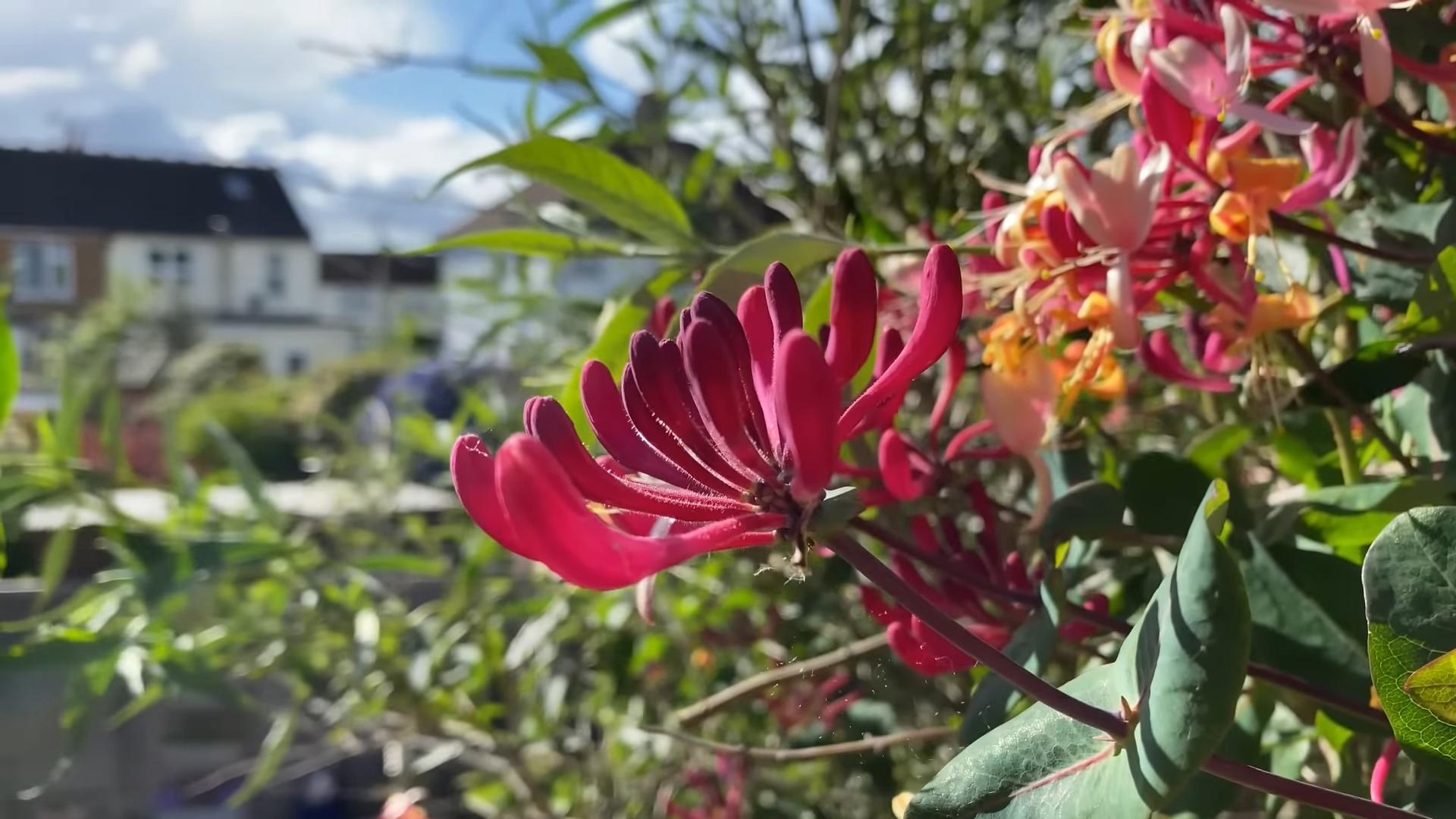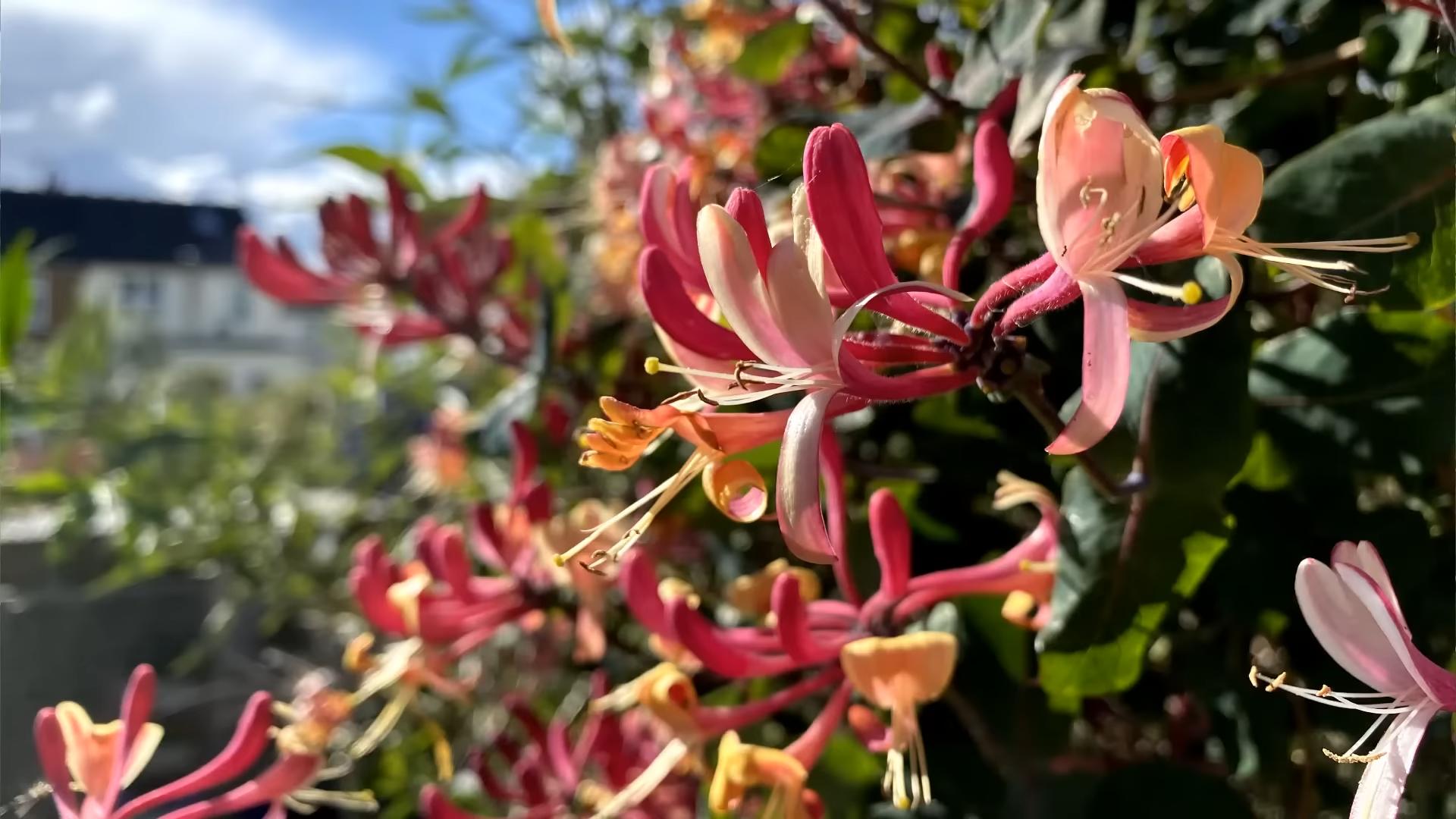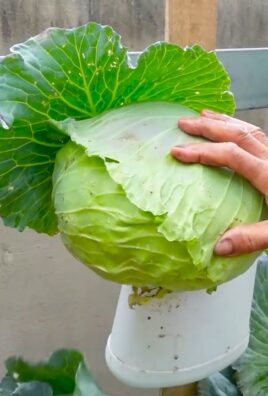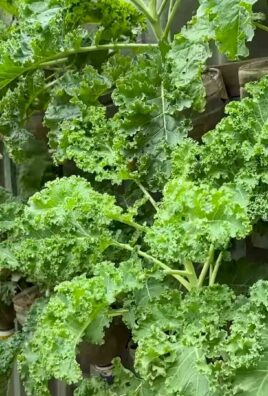Grow Honeysuckle on Trellis and transform your garden into a fragrant, vibrant haven! Have you ever dreamt of strolling through your backyard, enveloped in the sweet, intoxicating scent of honeysuckle? I know I have! For centuries, honeysuckle has captivated gardeners with its delicate beauty and enchanting aroma. In Victorian times, it symbolized devoted affection, and its presence in a garden was considered a sign of good luck.
But let’s be honest, sometimes getting those climbing beauties to thrive can feel like a bit of a challenge. They can get unruly, and without proper support, they might not showcase their full potential. That’s where the magic of a trellis comes in!
This DIY guide is your secret weapon to successfully grow honeysuckle on trellis. I’ll walk you through everything you need to know, from choosing the right trellis to training your honeysuckle for optimal growth and stunning floral displays. Imagine the curb appeal you’ll add, the hummingbirds you’ll attract, and the sheer joy of having a thriving, fragrant honeysuckle vine gracing your garden. Let’s get started and create a breathtaking focal point in your outdoor space!

DIY: Creating a Stunning Honeysuckle Trellis for Your Garden
Alright, fellow garden enthusiasts! Today, we’re diving into a project that’s close to my heart: building a beautiful and functional honeysuckle trellis. Honeysuckle is such a rewarding plant – fragrant, visually stunning, and a real hummingbird magnet! But it needs support to truly thrive. So, let’s get our hands dirty and create a trellis that will showcase its beauty.
Choosing the Right Honeysuckle Variety
Before we even think about building the trellis, let’s talk honeysuckle. Not all varieties are created equal, especially when it comes to growing on a trellis. Some are more vigorous and could overwhelm a smaller structure.
* Consider the size: Look for varieties that are naturally well-behaved and won’t grow too large for your space. Goldflame honeysuckle (Lonicera x heckrottii ‘Goldflame’) is a popular choice, known for its beautiful pink and yellow flowers and manageable size. Another great option is ‘Dropmore Scarlet’ (Lonicera x brownii ‘Dropmore Scarlet’), which offers vibrant red-orange blooms.
* Think about fragrance: Honeysuckle is famous for its sweet scent. ‘Halliana’ (Lonicera japonica ‘Halliana’) is a classic choice with a strong, intoxicating fragrance. However, be aware that Japanese honeysuckle can be invasive in some areas, so check your local regulations before planting.
* Check for disease resistance: Some honeysuckle varieties are more susceptible to diseases like powdery mildew. Look for disease-resistant cultivars to avoid problems down the road.
Planning Your Trellis Design
Now for the fun part – designing your trellis! This is where you can really get creative and tailor the structure to your garden’s aesthetic.
* Size matters: Consider the mature size of your chosen honeysuckle variety when determining the trellis dimensions. You don’t want to build something too small that the plant will quickly outgrow. A trellis that’s 6-8 feet tall and 4-6 feet wide is a good starting point for many varieties.
* Material selection: Wood is a classic and readily available option. Cedar is naturally rot-resistant and a great choice for outdoor projects. Pressure-treated lumber is another option, but make sure it’s safe for use around plants. Metal trellises are also durable and can add a modern touch to your garden.
* Style considerations: Do you prefer a simple, minimalist design or something more elaborate? A basic ladder-style trellis is easy to build, while a fan-shaped or arched trellis can add visual interest. You can also incorporate decorative elements like finials or lattice panels.
* Location, location, location: Think about where you’ll be placing the trellis. Will it be against a wall, fence, or freestanding in the garden? This will influence the design and construction method.
Materials You’ll Need
Okay, let’s gather our supplies. Here’s a list of what you’ll likely need, but adjust it based on your specific design:
* Lumber (cedar, pressure-treated, or your preferred wood) for the frame and supports
* Lattice panels (optional, for added support and visual appeal)
* Wood screws (exterior grade)
* Wood glue (exterior grade)
* Stain or paint (optional, for weather protection and aesthetics)
* Post hole digger (if you’re building a freestanding trellis)
* Concrete mix (if you’re building a freestanding trellis)
* Measuring tape
* Pencil
* Saw (circular saw or hand saw)
* Drill with various drill bits
* Screwdriver
* Level
* Safety glasses
* Work gloves
Building Your Honeysuckle Trellis: Step-by-Step
Alright, let’s get to building! I’m going to walk you through the process of creating a basic ladder-style wooden trellis. You can adapt these steps to suit your own design.
1. Cutting the Lumber
* Measure and mark: Use your measuring tape and pencil to mark the lumber according to your design. Remember to double-check your measurements before cutting!
* Cut the frame pieces: Cut the vertical and horizontal pieces for the trellis frame. For example, you might cut two 8-foot pieces for the vertical supports and four 4-foot pieces for the horizontal rungs.
* Cut the support posts (if needed): If you’re building a freestanding trellis, cut the support posts to the desired length. These will be buried in the ground to provide stability.
2. Assembling the Frame
* Apply wood glue: Apply a generous amount of wood glue to the ends of the horizontal rungs where they will connect to the vertical supports.
* Attach the rungs: Position the rungs between the vertical supports, ensuring they are evenly spaced. Use your drill to pre-drill pilot holes to prevent the wood from splitting.
* Secure with screws: Drive wood screws through the vertical supports into the ends of the rungs. Make sure the screws are long enough to provide a strong hold.
* Check for square: Use a square to ensure that the frame is square. Adjust as needed before the glue dries.
3. Adding Lattice (Optional)
* Measure and cut: Measure the inside dimensions of the trellis frame and cut the lattice panel to fit.
* Attach the lattice: Position the lattice panel inside the frame and secure it with wood screws. You can also use small nails or staples.
4. Finishing Touches
* Sand the trellis: Use sandpaper to smooth any rough edges or splinters.
* Stain or paint (optional): Apply a stain or paint to protect the wood from the elements and enhance its appearance. Follow the manufacturer’s instructions for application and drying time.
* Let it dry: Allow the stain or paint to dry completely before moving on to the next step.
5. Installing the Trellis
This step depends on whether you’re building a freestanding trellis or attaching it to an existing structure.
* Freestanding Trellis:
* Dig post holes: Use a post hole digger to dig holes for the support posts. The depth of the holes will depend on the size of the trellis and the soil conditions, but a good rule of thumb is to bury the posts at least 2 feet deep.
* Position the trellis: Place the trellis in the holes, ensuring it’s level and plumb.
* Pour concrete: Mix concrete according to the manufacturer’s instructions and pour it into the holes around the support posts.
* Let the concrete cure: Allow the concrete to cure completely before planting your honeysuckle. This usually takes 24-48 hours.
* Attaching to a Wall or Fence:
* Locate studs or support beams: Use a stud finder to locate the studs or support beams in the wall or fence.
* Attach mounting brackets: Attach mounting brackets to the wall or fence, aligning them with the studs or support beams.
* Secure the trellis: Lift the trellis into place and secure it to the mounting brackets with screws.
Planting Your Honeysuckle
Now for the moment we’ve been waiting for – planting the honeysuckle!
* Choose the right location: Honeysuckle prefers full sun to partial shade. Make sure the location you choose receives at least 6 hours of sunlight per day.
* Prepare the soil: Honeysuckle prefers well-drained soil that is rich in organic matter. Amend the soil with compost or other organic material before planting.
* Dig a hole: Dig a hole that is twice as wide as the root ball of the honeysuckle plant and just as deep.
* Plant the honeysuckle: Gently remove the honeysuckle plant from its container and loosen the roots. Place the plant in the hole, ensuring that the top of the root ball is level with the surrounding soil.
* Backfill the hole: Backfill the hole with soil, gently tamping it down around the plant.
* Water thoroughly: Water the honeysuckle plant thoroughly after planting.
* Mulch: Apply a layer of mulch around the base of the plant to help retain moisture and suppress weeds.
Training Your Honeysuckle
Honeysuckle needs a little guidance to climb the trellis effectively.
* Tie the vines: As the honeysuckle vines grow, gently tie them to the trellis using soft twine or plant ties.
* Encourage lateral growth: Prune the tips of the vines to encourage lateral growth and branching. This will help the plant fill out the trellis more quickly.
* Remove unwanted growth: Regularly remove any unwanted growth or suckers that appear at the base of the plant.
Caring for Your Honeysuckle
With a little care, your honeysuckle will thrive and provide years of beauty and fragrance.
* Watering: Water regularly

Conclusion
So, there you have it! Growing honeysuckle on a trellis isn’t just about adding a beautiful, fragrant plant to your garden; it’s about creating a living, breathing work of art. It’s about attracting hummingbirds and butterflies, filling your outdoor space with an intoxicating aroma, and enjoying the satisfaction of nurturing something beautiful from start to finish. This DIY project is a must-try for anyone looking to elevate their garden’s aesthetic and ecological value.
The benefits extend beyond mere aesthetics. A well-trained honeysuckle vine can provide privacy, create shade, and even act as a natural sound barrier. Plus, the sheer joy of watching your honeysuckle thrive, its tendrils reaching and grasping for support, is an experience that connects you to the natural world in a profound way.
Consider these variations to personalize your honeysuckle trellis project:
* **Choose a different honeysuckle variety:** Explore the diverse world of honeysuckles! From the classic Japanese honeysuckle (Lonicera japonica) to the native American honeysuckle (Lonicera sempervirens), each offers unique flower colors, fragrances, and growth habits. Be mindful of invasive potential when selecting your variety, especially in certain regions. Opting for native varieties is always a good choice for supporting local ecosystems.
* **Experiment with trellis designs:** Don’t limit yourself to a standard trellis. Get creative with your design! Use reclaimed wood for a rustic look, build a geometric trellis for a modern touch, or even repurpose an old gate or ladder. The possibilities are endless.
* **Companion planting:** Enhance your honeysuckle’s growth and attract beneficial insects by planting companion plants at its base. Consider herbs like lavender and rosemary, which deter pests, or flowering plants like salvia and bee balm, which attract pollinators.
* **Vertical Garden Wall:** If you have a larger space, consider creating a vertical garden wall using multiple trellises and honeysuckle vines. This will create a stunning focal point and maximize your vertical growing space.
Growing honeysuckle on a trellis is an incredibly rewarding experience. It’s a project that combines creativity, gardening skills, and a love for nature. It’s also a relatively low-maintenance project once established, requiring only occasional pruning and watering.
We wholeheartedly encourage you to embark on this DIY adventure. Imagine the sweet fragrance wafting through your garden, the vibrant colors of the blossoms, and the delight of watching hummingbirds flitting among the flowers. It’s an experience that will enrich your life and transform your outdoor space.
Don’t hesitate to get your hands dirty and give this DIY trick a try. We’re confident that you’ll be thrilled with the results. And most importantly, we want to hear about your experience! Share your photos, tips, and stories with us in the comments below. Let’s create a community of honeysuckle enthusiasts and inspire others to embrace the beauty of vertical gardening. Let us know what kind of trellis you used, what variety of honeysuckle you chose, and any challenges or successes you encountered along the way. Your feedback will help others learn and grow, and together, we can create a world filled with fragrant, beautiful honeysuckle vines.
Frequently Asked Questions (FAQ)
What type of trellis is best for honeysuckle?
The best type of trellis for honeysuckle depends on the variety of honeysuckle you’re growing and the overall aesthetic you’re aiming for. Generally, honeysuckle needs a sturdy trellis that provides ample support for its climbing tendrils. Options include:
* **Wooden trellises:** These are a classic choice, offering a natural and rustic look. Choose rot-resistant wood like cedar or redwood for longevity. Ensure the trellis has a grid pattern or horizontal slats that the honeysuckle can easily grip.
* **Metal trellises:** Metal trellises are durable and can withstand harsh weather conditions. They come in various styles, from simple wire structures to ornate wrought iron designs. Make sure the metal is rust-resistant or powder-coated to prevent corrosion.
* **Wire trellises:** These are a more minimalist option, consisting of wires stretched between posts or attached to a wall. They’re ideal for training honeysuckle in a specific pattern or shape. Use sturdy wire that won’t sag under the weight of the vine.
* **Arbors and pergolas:** These structures provide a larger and more dramatic support for honeysuckle. They create a shaded walkway or seating area and add a touch of elegance to your garden.
Consider the size and weight of your mature honeysuckle vine when selecting a trellis. A larger, more vigorous variety will require a sturdier and more substantial trellis than a smaller, less aggressive one.
How do I train honeysuckle to grow on a trellis?
Training honeysuckle to grow on a trellis is a simple process that involves guiding the vines and securing them to the support structure. Here’s how:
1. **Plant your honeysuckle near the trellis:** Ensure the base of the plant is close enough to the trellis so that the vines can easily reach it.
2. **Gently guide the vines:** As the honeysuckle grows, gently guide the vines towards the trellis. Use your hands to wrap the tendrils around the trellis supports.
3. **Secure the vines:** If the vines don’t naturally cling to the trellis, you can secure them using plant ties, twine, or soft wire. Be careful not to tie the vines too tightly, as this can restrict their growth.
4. **Prune regularly:** Prune the honeysuckle regularly to encourage branching and maintain its shape. Remove any dead, damaged, or crossing branches.
5. **Continue training:** Continue guiding and securing the vines as they grow, ensuring that they are evenly distributed across the trellis.
With a little patience and effort, you can train your honeysuckle to create a beautiful and thriving vertical display.
How often should I water honeysuckle?
Honeysuckle watering needs depend on several factors, including the climate, soil type, and age of the plant. Generally, newly planted honeysuckle needs more frequent watering than established plants.
* **Newly planted honeysuckle:** Water deeply and regularly, especially during the first few weeks after planting. Keep the soil consistently moist but not waterlogged.
* **Established honeysuckle:** Water deeply whenever the top inch of soil feels dry to the touch. Avoid overwatering, as this can lead to root rot.
* **During dry spells:** Water more frequently during periods of drought or hot weather.
* **Container-grown honeysuckle:** Container-grown honeysuckle tends to dry out more quickly than plants in the ground. Check the soil moisture regularly and water as needed.
Mulching around the base of the honeysuckle can help retain moisture in the soil and reduce the need for frequent watering.
What are the common problems when growing honeysuckle?
While honeysuckle is generally a resilient plant, it can be susceptible to certain problems:
* **Aphids:** These small, sap-sucking insects can infest honeysuckle leaves and stems, causing them to become distorted and sticky. Control aphids with insecticidal soap or neem oil.
* **Powdery mildew:** This fungal disease appears as a white, powdery coating on the leaves. Improve air circulation and treat with a fungicide if necessary.
* **Honeysuckle witches’ broom:** This disease causes dense clusters of shoots to form on the branches. Prune out the affected branches to prevent the spread of the disease.
* **Invasive potential:** Some honeysuckle varieties, particularly Japanese honeysuckle, can be invasive in certain regions. Choose native or non-invasive varieties to avoid ecological problems.
* **Deer browsing:** Deer may browse on honeysuckle leaves and stems, especially in areas with high deer populations. Protect your honeysuckle with fencing or deer repellent.
Regularly inspect your honeysuckle for signs of pests or diseases and take action promptly to prevent serious problems.
Can I grow honeysuckle in a pot?
Yes, you can absolutely grow honeysuckle in a pot! Choose a large pot with drainage holes to accommodate the plant’s root system. Use a well-draining potting mix and provide a trellis or other support structure for the vine to climb. Container-grown honeysuckle may require more frequent watering and fertilization than plants in the ground. Select a compact or dwarf honeysuckle variety that is well-suited for container growing. Some good choices include ‘Goldflame’ honeysuckle and ‘Dropmore Scarlet’ honeysuckle. Remember to protect the pot from freezing temperatures during the winter months, especially in colder climates.





Leave a Comment